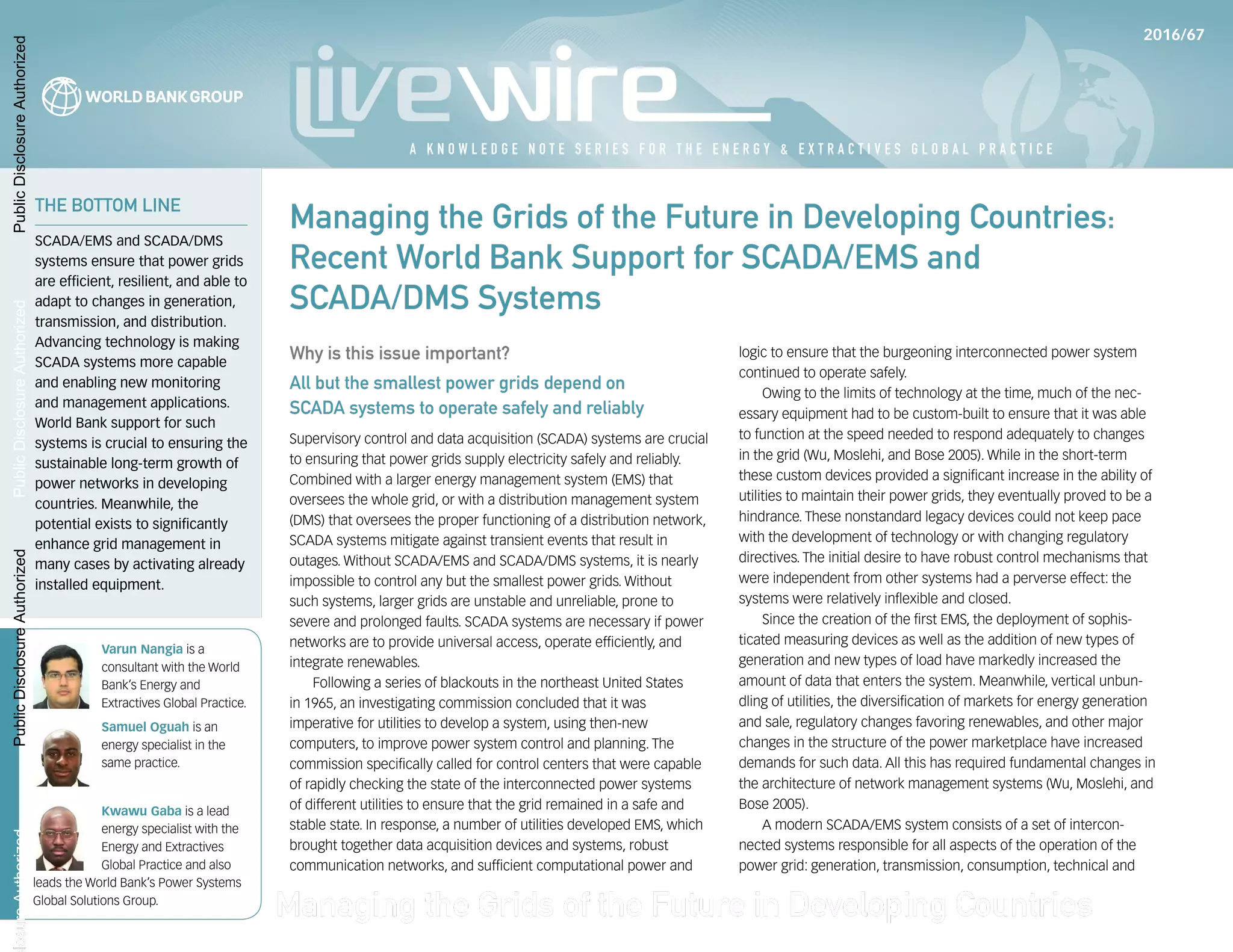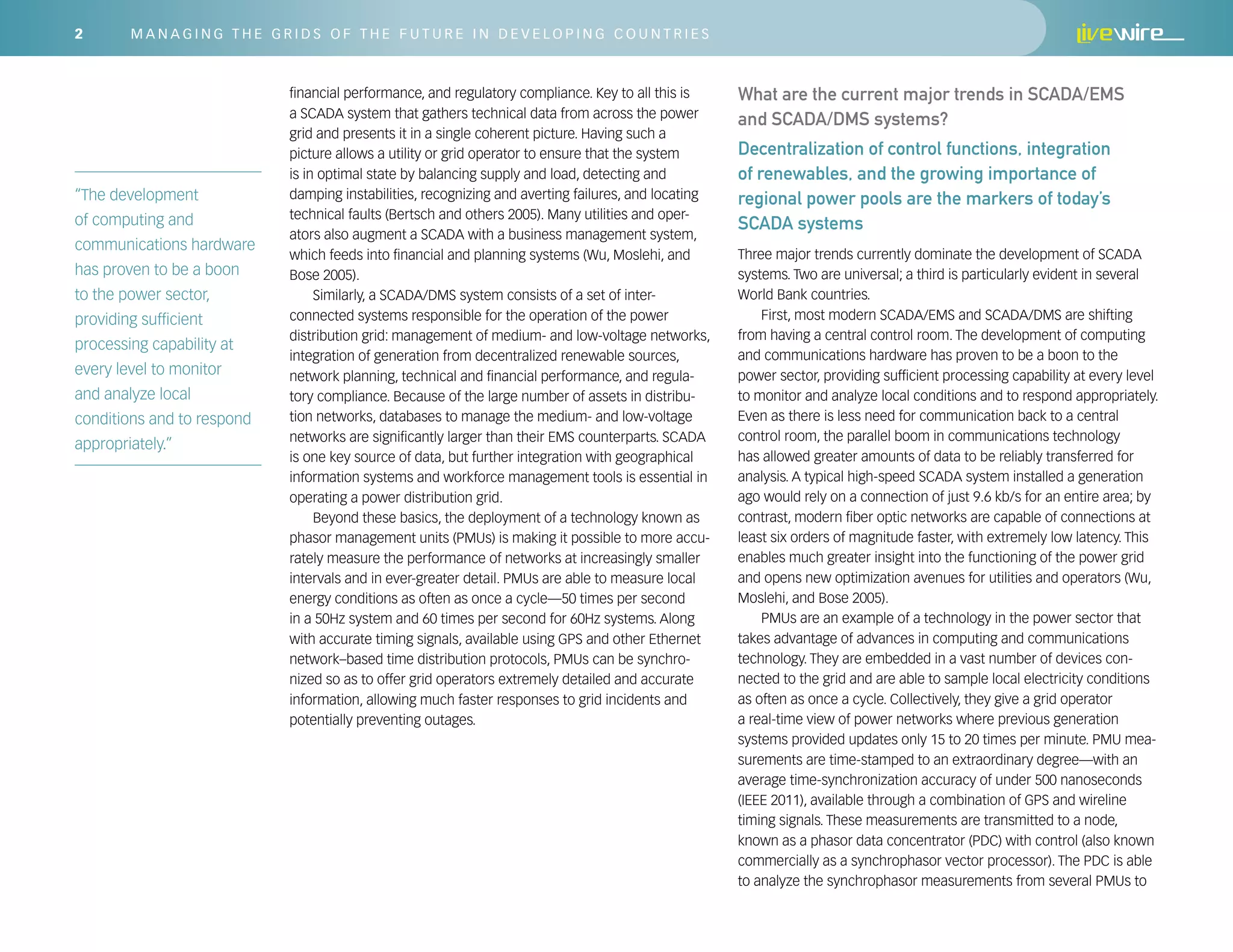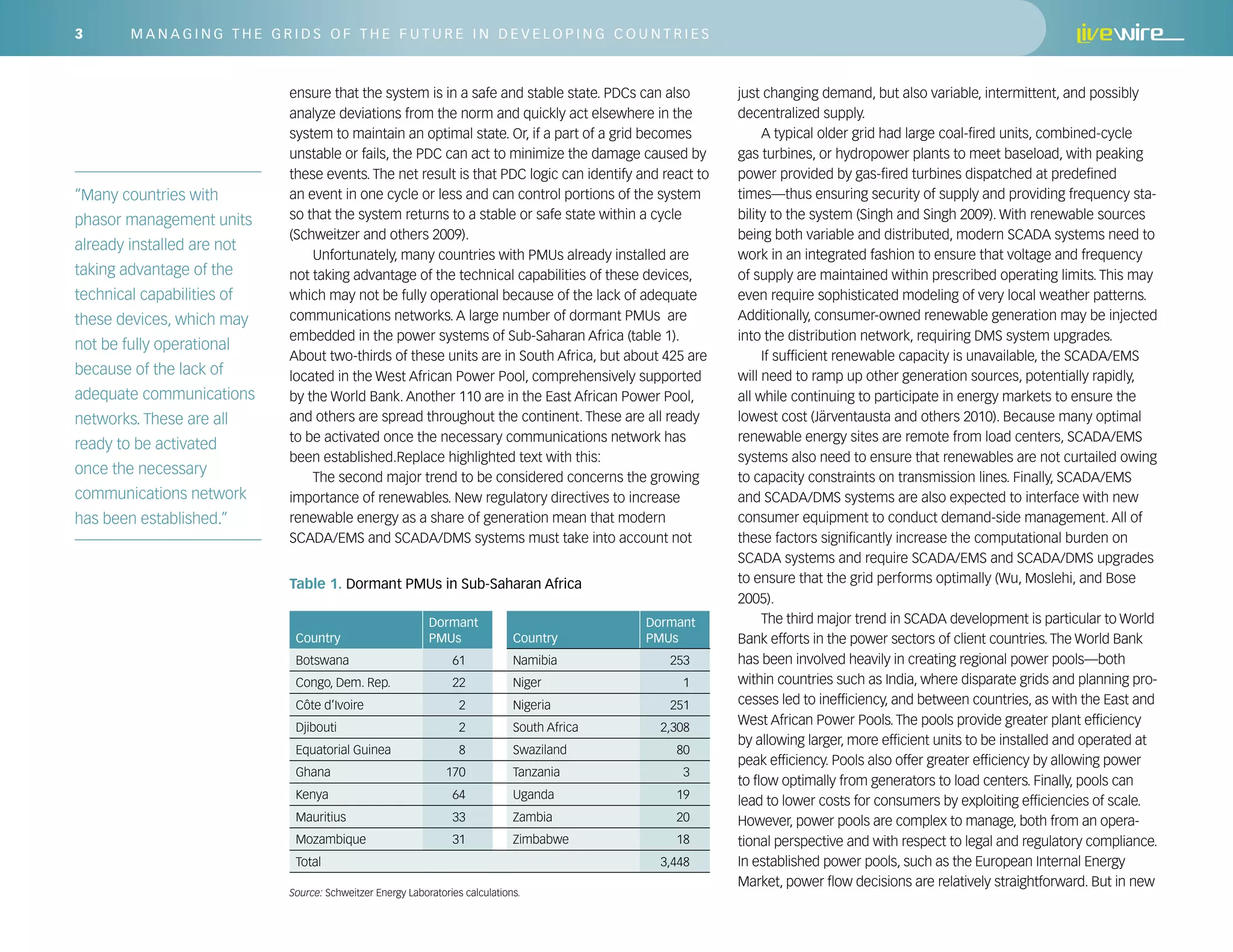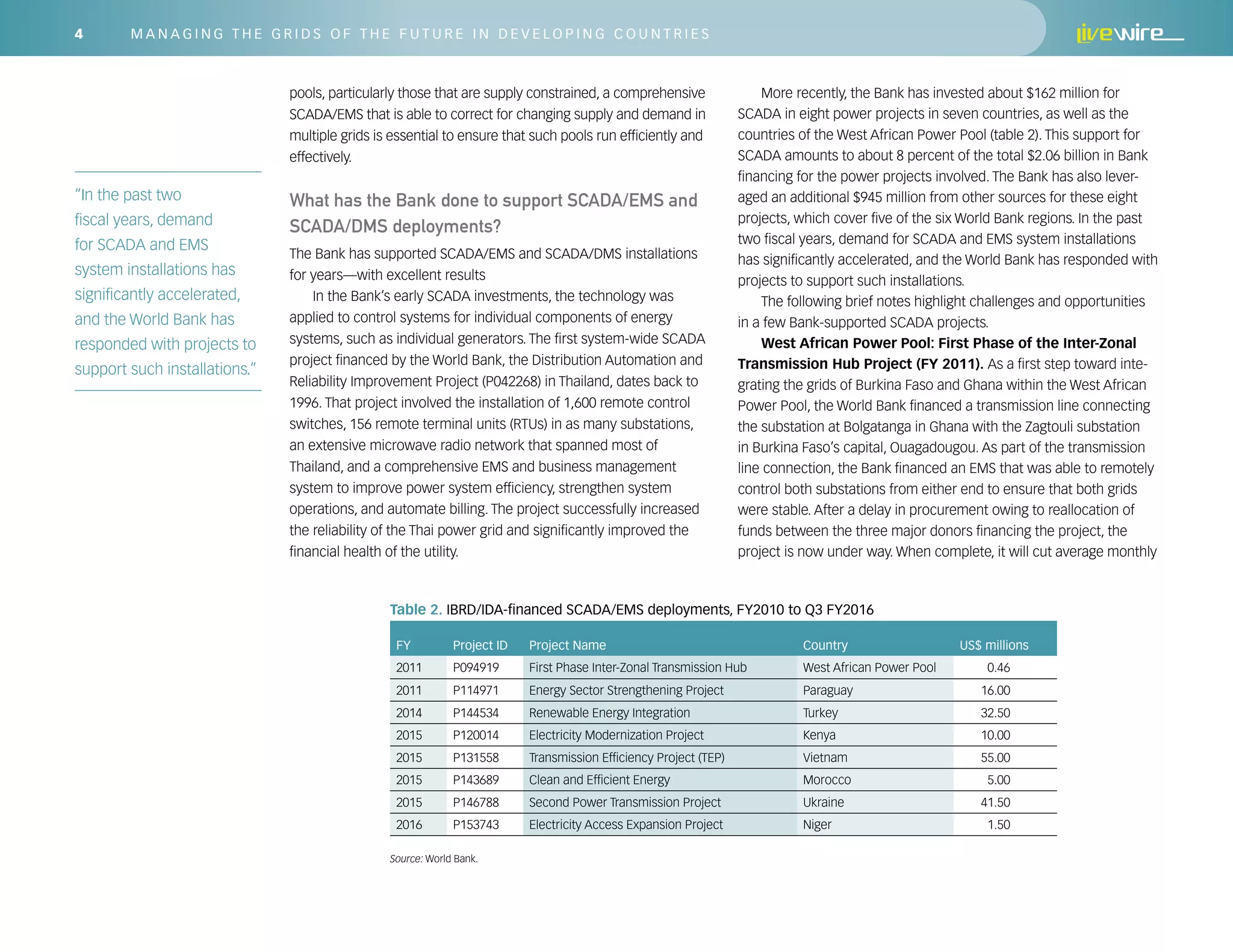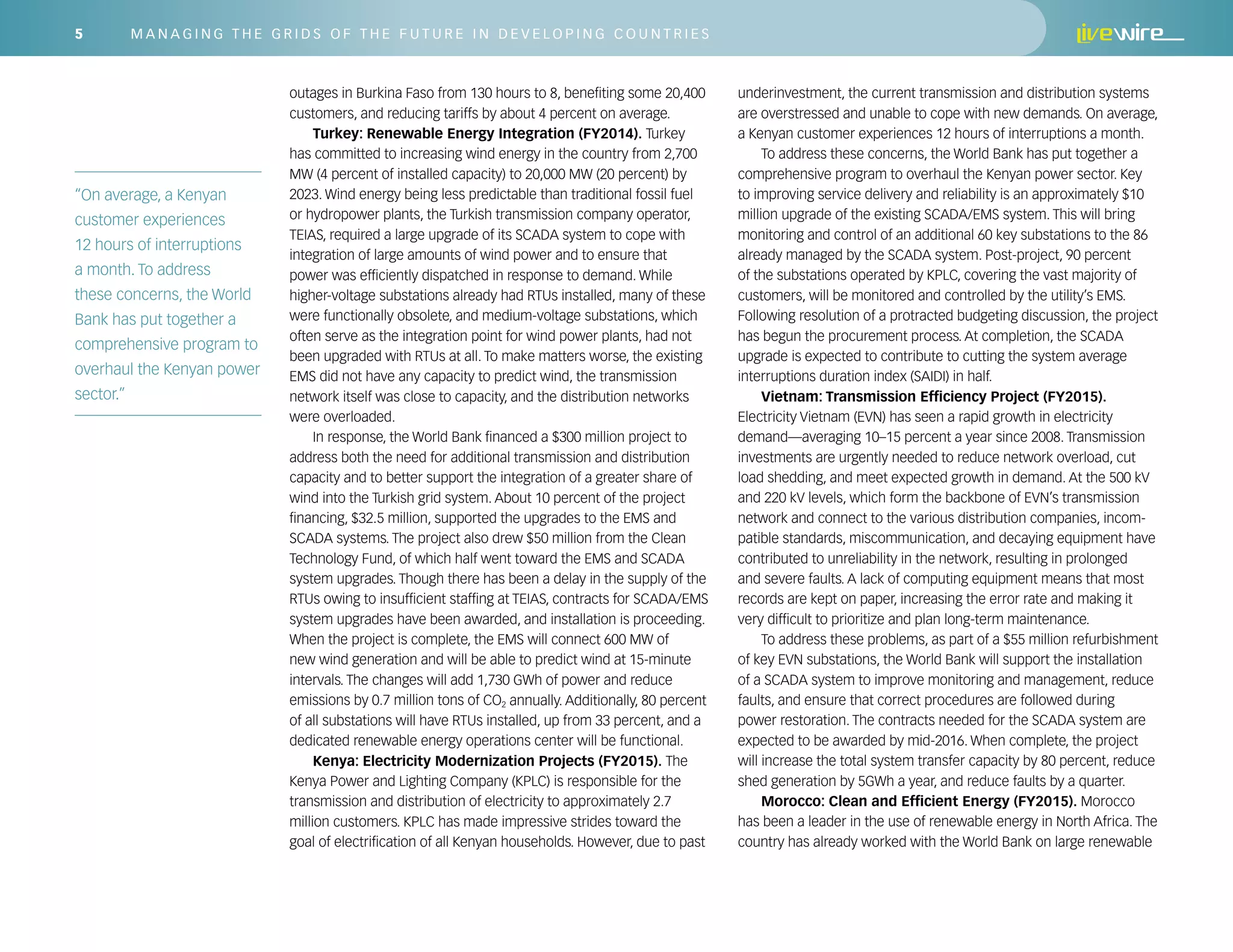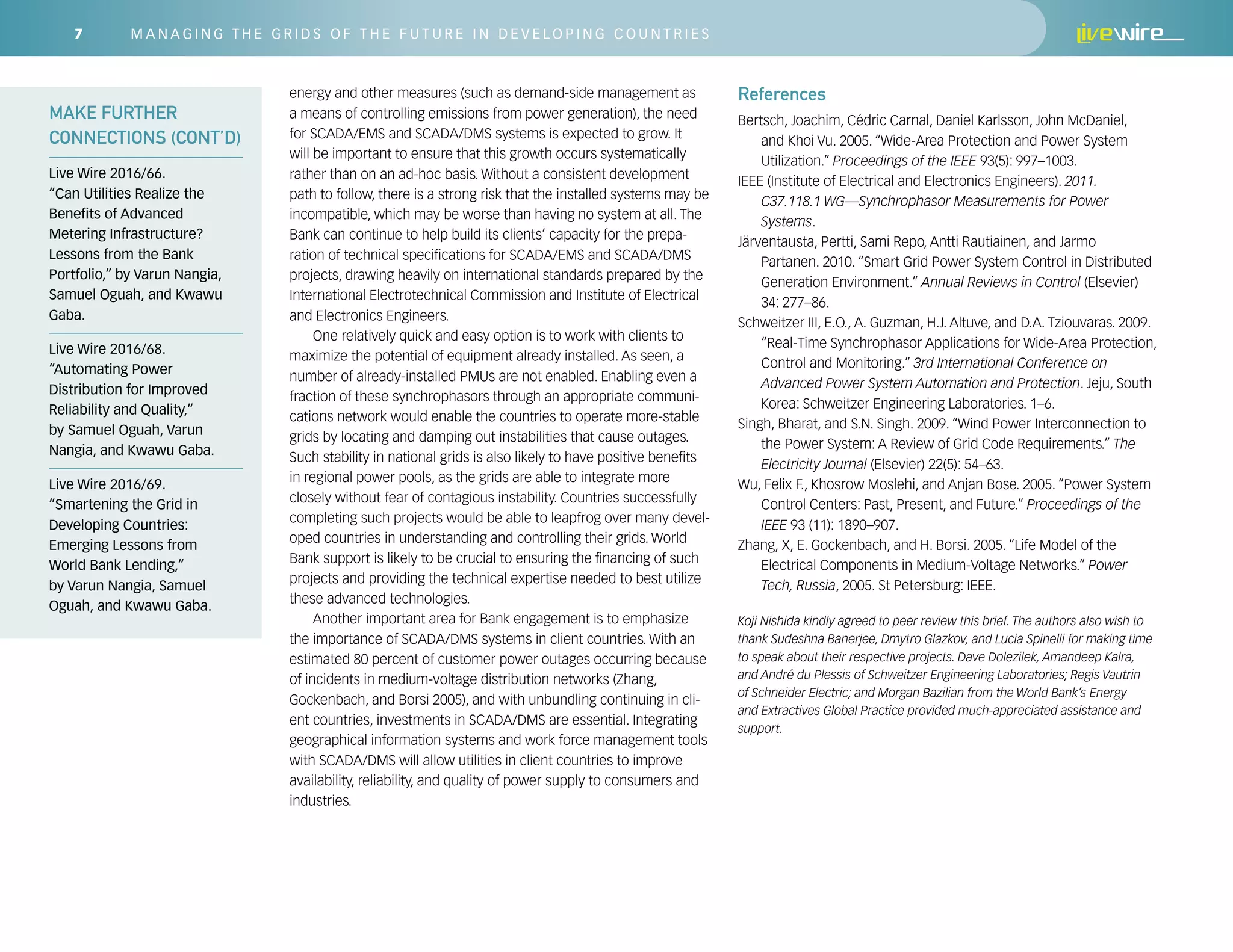Supervisory control and data acquisition (SCADA) systems are crucial for ensuring power grids supply electricity safely and reliably when combined with larger energy management systems (EMS) or distribution management systems (DMS). SCADA/EMS and SCADA/DMS systems are necessary for controlling power grids, integrating renewables, and providing universal access. World Bank support is important for establishing these systems in developing countries' power networks to ensure sustainable long-term growth.
